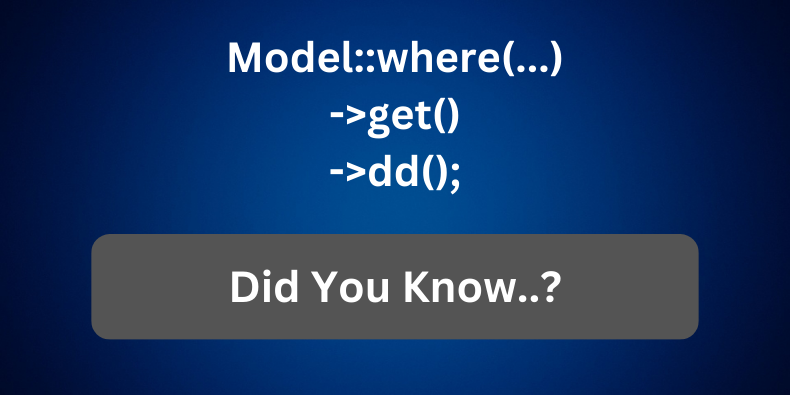dd() is a useful debugging function in Laravel that stands for "Dump and Die." It allows you to dump variables, data, or information to the screen and immediately terminate the script's execution, which is particularly handy for debugging purposes. Here are some tricks and tips for using dd() effectively in Laravel:
- Dump Multiple Variables:
You can pass multiple variables to dd() by separating them with commas. This is helpful for examining the values of different variables in a single call.
$variable1 = 'Value 1';
$variable2 = 'Value 2';
dd($variable1, $variable2);- Dump Object Properties:
You can use dd() to inspect the properties of an object. It will display all the public properties and their values.
$user = User::find(1);
dd($user);- Dump Relationships:
dd() also works well with Eloquent relationships. You can use it to see the data related to a model.
$user = User::with('posts')->find(1);
dd($user);- Dump and Halt Execution:
In addition to dd() , there's dump() which dumps the data but doesn't halt the script's execution. This can be useful when you want to inspect data without stopping the execution flow.
$variable = 'Value';
dump($variable);
// Code execution continues after this point- Dump a Message:
You can include a message with dd() to provide context for the dumped data. This can be helpful when debugging to understand why you're using dd() at that particular point in your code.
$variable = 'Value';
dd('This is a debug message', $variable);- Conditional Dumping:
You can use dd() conditionally to only dump data when certain conditions are met. This can help you debug specific scenarios without cluttering your code.
if ($condition) {
dd($variable);
}- Using dd() with Collections:
dd() can be used with Laravel collections to inspect the contents of a collection.
$collection = collect([1, 2, 3]);
dd($collection);- Customizing dd() Behavior:
You can customize how dd() behaves by modifying the bootstrap/helpers.php file. For example, you can change the default behavior to log data instead of dumping it to the screen. - Disable dd() in Production:
It's a good practice to disable or replace dd() calls in your production environment to prevent accidental debugging information from being displayed to users. You can do this by modifying the helpers.php file or using environment-specific configurations. - Learn to Use It Sparingly:
While dd() is a powerful debugging tool, it should be used sparingly in production code. Excessive use of dd() can make your code difficult to maintain and can affect application performance.
Important:
Remember to remove or comment out dd() calls once you've finished debugging, as leaving them in your code can lead to unexpected behavior in a production environment.
P.D: The image author is Povilas Korop in him post 7 "Tricks" With dd() in Laravel




